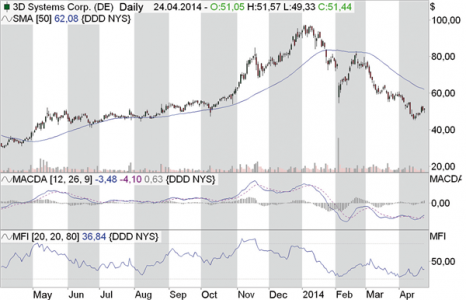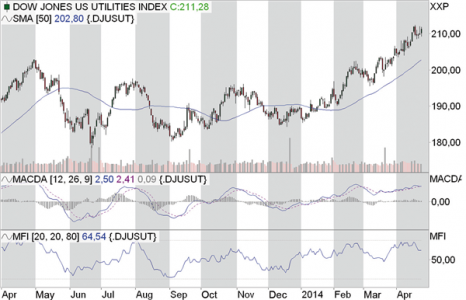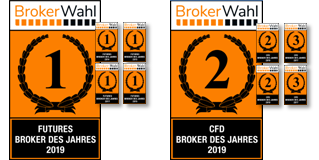
"Many paths lead to the goal." There is a lot of truth in this old saying when you think about trading. There are many ways to trade the markets. After hedge fund manager Jurina Novotna has explained position, pullback/retracement and breakout strategies elsewhere, this time she will focus on reversal, momentum and arbitrage strategies. At the end of the day, each trader can decide for himself which trading style suits him best.
Reverse strategies
As a rule, reversal strategies are used by chart-technically oriented traders in times of low activity on the part of fundamentally oriented market participants. Then the markets tend to move sideways, i.e. to develop without a clear direction. Traders look for key price levels that they can use to trade directly in anticipation of a rebound when the price hits them. Such "bounces" offer small, quick opportunities to take profits in low-turnover market activity. Again, the tools used for reversal trading are almost identical to those used in previous strategies and include, in particular, support and resistance. Once the fundamental picture is clear, we need to focus on technical analysis, especially support and resistance levels that are close to the current price. The usual levels used by traders in this type of strategy include old highs and lows from previous trading days, pivot point levels, Fibonacci levels and areas where all three of these levels overlap. These overlaps are known as "confluences". They are an excellent way to look for the price to recover during the trading day. Traders often look for just a few pips of profit instead of trying to hold their positions over several trading days.
Recommendation: Before reversal trading, you must be sure that no major news releases are expected during a trading day and that no important monetary policy decision-makers will make statements or comments to the press. These events can trigger movements that lead to losses in your short-term trading. Reverse trading is reserved exclusively for times when the market is not moving in a clear direction and should not be used blindly on all trading days as this may increase your losses.
Image 1: Reverse trade: 3D Systems (DDD)

Image 1: An uptrend rapidly changes direction, downwards, as seen in early 2014 (several gaps downwards), reversing the long uptrend. The 50's Moving Average (GD) changes from a support line to a resistance line.
Momentum Strategies
Momentum trading is not so much a matter of making precise entries as of capturing the strength and continuation of the movement. Traders are not looking to see whether the price has a setback or is breaking out of a certain level, but whether it is beginning to move sustainably in the direction of the prevailing trend. While this type of trading is fundamentally oriented, it relies heavily on indicators such as moving averages and oscillators for trading signals.
Traders use strategies that are based on momentum when they see the stock they are trading move over the long term. For example, if there is a significant change in a country's fundamentals that results in a change in interest rates, investors will be prompted to react and start buying or selling the currency of that country accordingly.
During these significant changes, professional traders are anxious to trade these currencies over the long term, often holding their positions over a period of weeks and months. Exits are usually dictated by fundamentals in a similar way to entries, with traders watching economic and geopolitical events very closely before deciding on a particular trading approach and how they manage their current positions. Recommendation: Due to the long-term nature of this strategy, traders are not so much interested in entry points, but simply wait until Technical Analysis gives them the opportunity to benefit from the movement.
A popular indicator for this type of trade is, for example, the 200-day moving average. Traders often look to see if the price breaks out above or below this average according to the expected movement, at which point they then enter the market and hold their positions.
Image 2: Momentum Trading: Dow Jones US Utilities (DJUSUT)

Image 2: A market that is stepping on the spot quickly catches its momentum, which triggers a long uptrend.
Read more:
Arbitrage strategies
The financial markets generally assume that the market price is the right price, at least in the short term. But what happens if what you see in New York is not what you see in London? What happens if you find that futures prices don't capture movements in the underlying? What if you see that the stock of every company in an industry has responded to a certain important message - with one exception? Then you have the opportunity to make money. But you should be very quick, because other market participants are unlikely to miss such an opportunity. You then try to sell as much of the expensive stock as possible in the high price market, borrowing stocks if necessary and buying the cheap paper in the low price market immediately.
This is an example of arbitrage. True arbitrage involves buying and selling the same security at the same time and many professional day traders use arbitrage as their primary investment strategy.
Recommendation: Good arbitrageurs have a paradoxical mix of patience (waiting for the right opportunity) and impatience (placing the trade immediately when the opportunity arises). If you have the inner strength to observe the market, or if you are willing to have robust software do this, you may be able to find some risk-free arbitrage opportunities and/or, if possible, use leverage to increase your profits.
Fascinating series of successes for WH SelfInvest in the choice of broker. Ones again in 2019!
In the annual broker election, traders voted WH SelfInvest "No. 1 Futures Broker" and "No. 2 CFD Broker". In an incredible five of the last six years, WH SelfInvest was voted the best futures broker and clearly beats all its competitors.
In CFDs, WH SelfInvest was only 0.1% behind this year's first place.
In short, the clients are very satisfied with the low commissions, the outstanding order execution and the legendary service.

